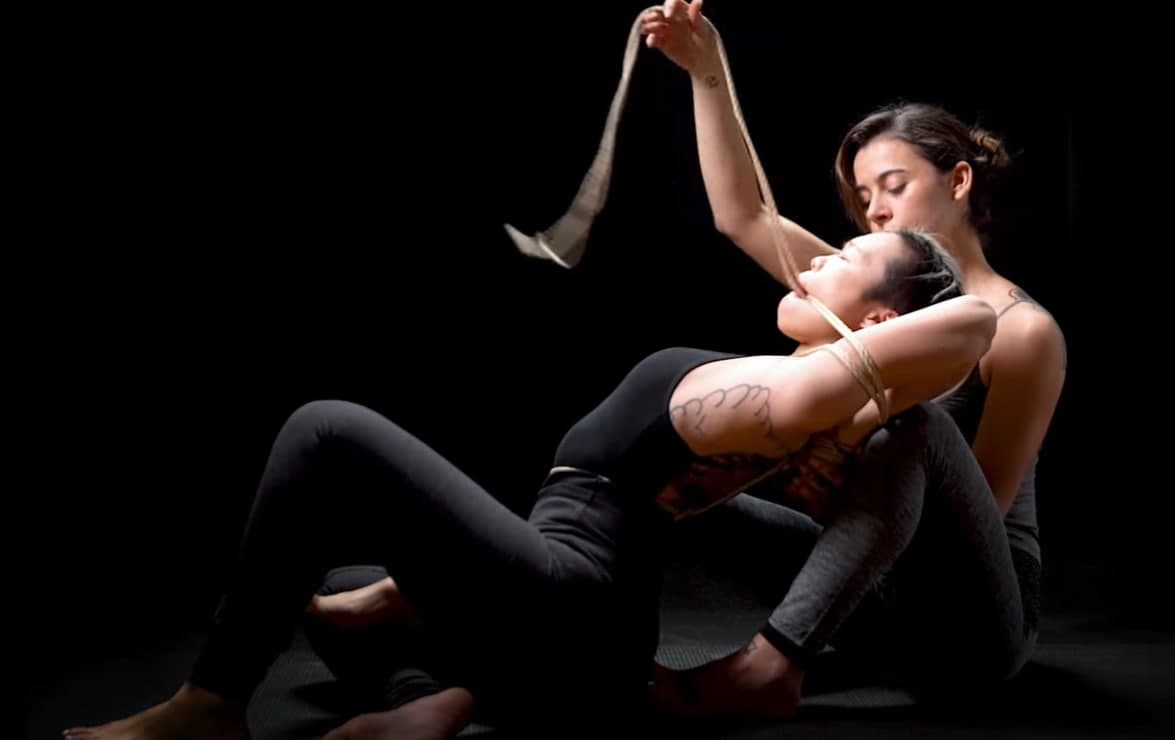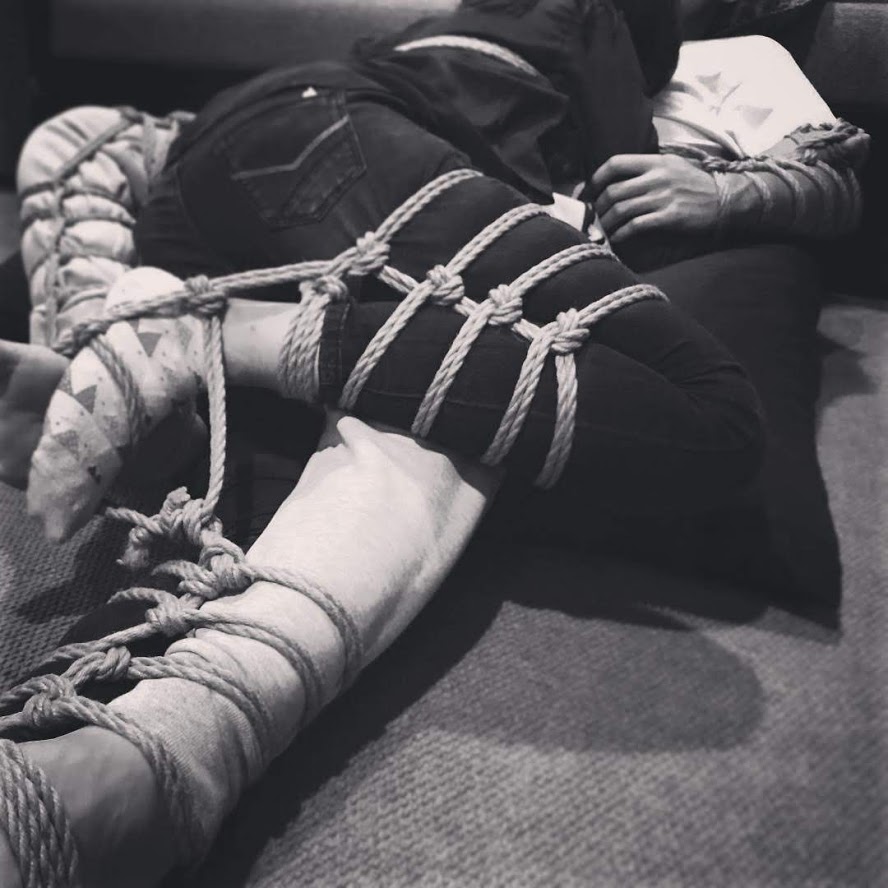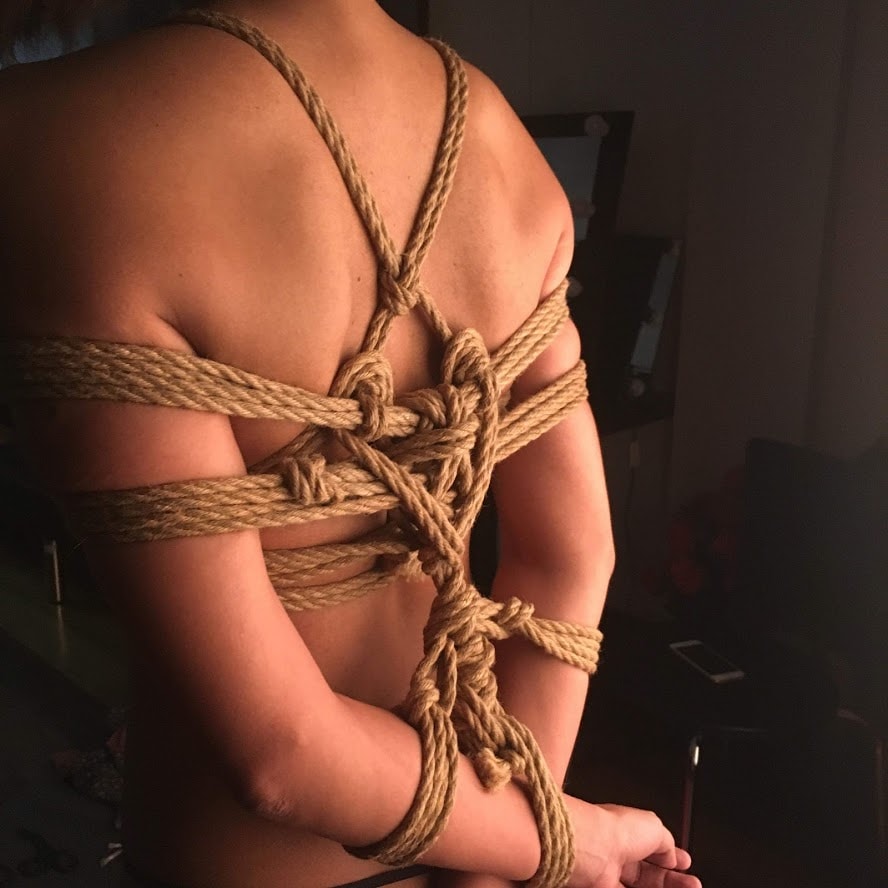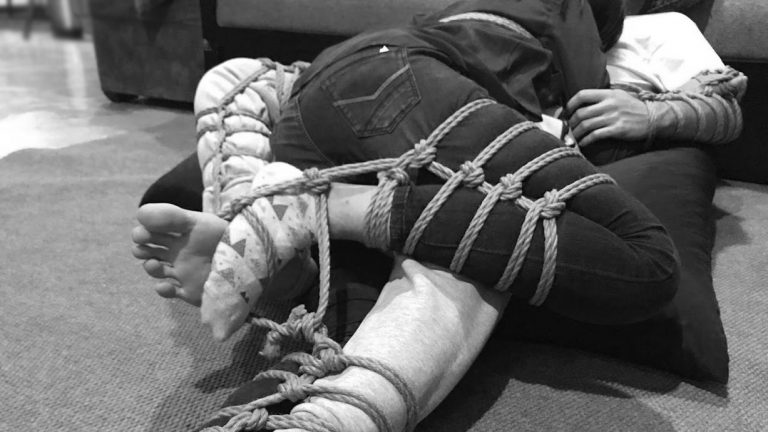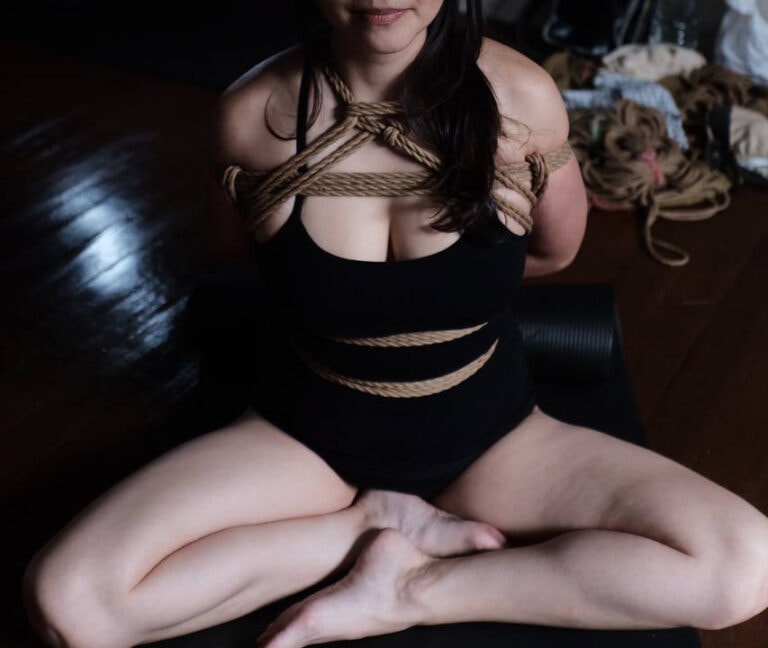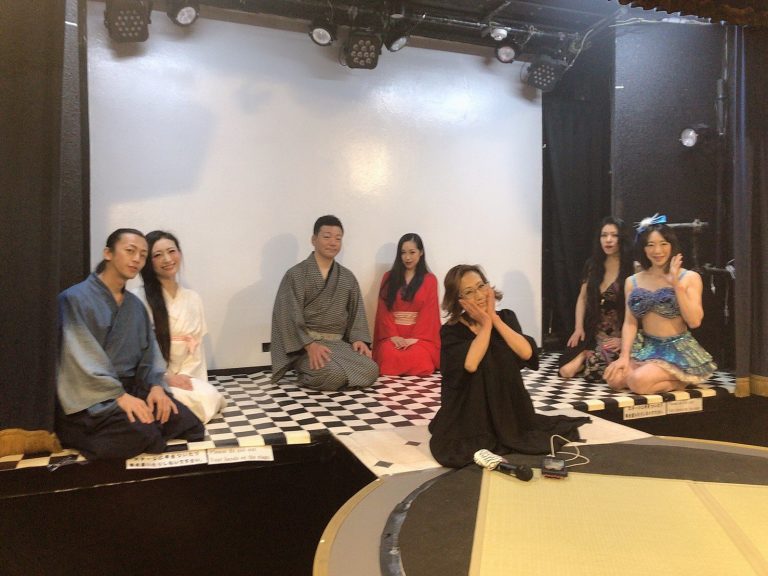Featured Image: L. Manay | Bottom: IAmEmma | Top: Toni
—
Trying Shibari for the first time can be intimidating for both rope tops (the ones who tie) and rope bottoms (the ones who are tied).
It feels like you’d need to know a hundred patterns, bend into a pretzel, and only use hand-treated jute ropes imported from Japan—but thankfully, that’s not true:
You can have great sessions with just one knot, average flexibility, and the nearest necktie.
To help you decide if you wanna get your feet wet, here are five things I think you should know before starting with Shibari.
1. Shibari is more than just pretty patterns
A lot of people who come across Shibari/Kinbaku for the first time end up mesmerized by the detailed knotwork and assume that’s all there is.
No matter which of the slightly different definitions you subscribe to, and whether you call it Shibari (“to tie”) or Kinbaku (“tight binding”), the unifying idea seems to be this:
Japanese rope bondage is a way to communicate our feelings with our partners.
In one of her demonstrations, Shibari artist Gorgone explained:
“When you tie your partner, the rope is merely an excuse to interact with each other. See it as an extension of your body… Rope is only a tool to communicate. It’s the language, not the subject.
What really matters is what you have to say, who you’re talking to, what you hope to hear in return, and how you want to say it.”
Similar to people who play music, draw, dance, or perform, Shibari artists understand the difference between mechanically executing a set of steps versus pouring your feelings into what you do.
You get to connect with your partner through a shared exploration of your desires and each other—deciding all the while if you will be sultry and passionate, intense and challenging, or lighthearted and fun (or something else entirely).
Do you know which desires you want to explore with your partner?
Watch Gorgone demonstrate her points in this video with JewelryAndFire:
2. There’s so much to enjoy and the list keeps growing
Throughout your rope journey, you might come across people with different reasons for (and approaches to) enjoying Shibari.
There are those who:
- just love how beautiful they or their partners look when bound
- enjoy submitting/surrendering to a dominant partner
- like the thrill of leading/dominating a submissive partner
- feel fulfilled when their partner trusts them with their safety
- are aroused when they can’t resist their lover’s advances
- want deeper levels of connection with their loved one/s
- like the creative challenge of adapting to different partners
- are after a deeply emotional experience
- see fear & pain as natural sensations that can be enjoyed
- appreciate having an excuse to enjoy something taboo because they’re being “forced” (consensually!)
- find the experience of being bound to be relaxing
- want a break from the stress of deadlines, exams, etc.
- feel that being bound in rope is liberating/spiritual
- like being tied up alongside their partner/s
And more!
So don’t feel pressured to fit into the boxes that media sells us just to look “legit”. Your desires are valid.
At the end of the day, we’re just a bunch of artists, lovers, ethical perverts, and kinky connoisseurs who want to have a fun and safe time with people we like.
(Rope Bottoms: Sora & Harue | Top: Dee)
3. Bondage (and other kinks) are dangerous
Yes, even floor-based rope bondage.
Professional rope artist WykD Dave wrote a post in 2013 saying:
“Rope isn’t safe, especially not suspension.
However having said that it doesn’t mean that we should accept injuries as a matter of course, they should be few and far between.
I am horrified when people shrug off injuries to models with an ‘oh well, these things happen’.”
When you you skip training and rush to play outside your skill level, the rope bottom can fall victim to accidents like asphyxiation, fall injuries, circulation loss, nerve damage, dislocation, and even death. Even when you’re trained, those risks persist. Thankfully, there are workshops available that explain the technical side of bondage to make it safer.
That said, don’t assume that physical dangers are the only things we should worry about. People can be hurt mentally and emotionally too.
Sexual assault, psychological trauma, consent violations, betrayals of trust, and emotional neglect are all possible consequences of a bondage session gone bad—and thankfully there are workshops and resources that help us mitigate these as well.
When you work together and don’t treat safety as an afterthought, you set yourself up to have more freedom and peace of mind to enjoy your bondage sessions together.
Being patient pays off. As they say, “Learn to crawl before you walk, walk before you run, and run before you fly.”
And maybe then, if you wanted, you’d be prepared to enjoy more intense sessions like these by Yoroi Nicolas:
4. You can customize your Shibari sessions like kinky buffets
Mainstream media doesn’t always show a complete picture of Shibari (or rope bondage in general) so it often looks like a bunch of fixed templates rather than a personally customizable Dungeons & Dragons campaign.
So I often hear newbies ask, “Do I have to be thin first? Do we have to be nude? Does it have to hurt?”
The simple answer is: no.
If you don’t want it that way, it doesn’t have to be.
Rope tops aren’t always male, rope bottoms aren’t always female, and there doesn’t always have to be a magnificent orgasm if you don’t want any.
Think of the stereotypes you’ve seen as examples or suggestions for how you can enjoy rope bondage and not how you always should.
Just like a buffet, you can select which aspects you want in your sessions and leave out the stuff that you don’t.
You can discuss how sexual/non-sexual your scene should be, which mood or intensity you want for the experience, whether you’ll allow photography and who gets to keep copies, if there are some positions and feelings you don’t want involved, and more.
You can even decide how (and how often) you want to do check-ins with your partner. Should the check-ins be verbal or non-verbal? Do you want the rope top to be checking in regularly, or should it the bottom’s responsibility to speak up when something feels off?
In her YouTube video with fellow sex educator Zoe Ligon, sex educator and Japanese rope artist Midori explained why she always negotiates with her partners before beginning the session:
“Even if we were lovers and life partners, your day is going to be different day-to-day, and my day is going to be different. I want to play with us now—not the us of yesterday or tomorrow.”
Isn’t that great? You can watch Midori and Zoe negotiate and tie together through their YouTube video here.
5. Shibari’s now digital. Follow & learn from your favorite artists online!
From online courses and video archives, to livestreamed performances and Q&As with the masters—Shibari is so much more accessible now compared to just a few months ago.
In 2020, Japanese bondage enthusiasts in the Philippines would have had to visit Japan just to watch the likes of Kinoko Hajime, Himuro Eve, and Yagami Ren performing in real time—but on May 4th, a live broadcast of their performance made it possible for people to share that experience with thousands of people across the globe.
Additionally, a long list of formerly physical-only Shibari schools have now launched their own series of online courses, connecting students worldwide with so many quality instructors.
This is a great opportunity for you to learn straight from internationally recognized teachers from the comfort of your own homes.
Just keep in mind that studying from videos alone has certain drawbacks! So make sure to seize opportunities to connect with said teachers, ask questions, and request clarifications when needed.
(Model: <name withheld> | Photo: @fineartnudemanila | Shibari: Dee)
Getting Started
Getting started with Japanese bondage might seem daunting but don’t fret—you have the entire Shibari.PH library to explore and we regularly have live events every month.
Get the latest updates for upcoming events, workshops, or resources by joining our newsletter!


